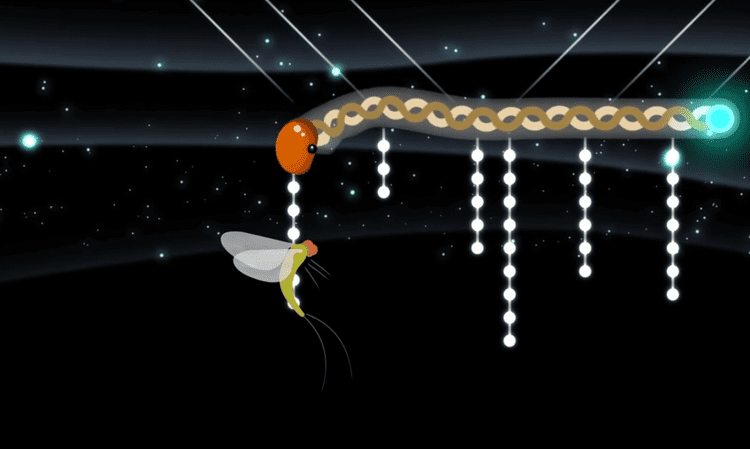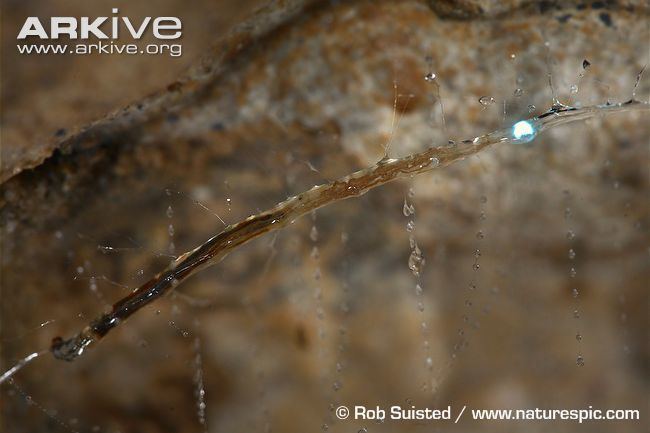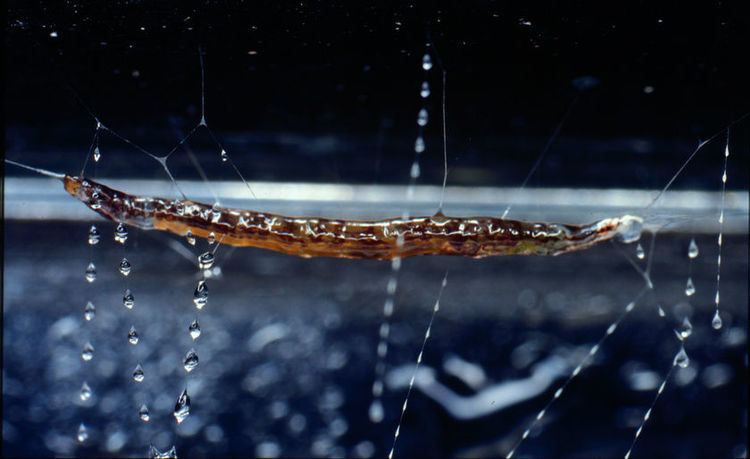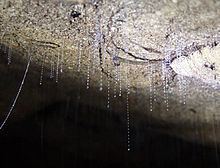Order Diptera Scientific name Arachnocampa Rank Genus | Higher classification Mycetophilidae | |
 | ||
Similar Arachnocampa luminosa, Insect, Mycetophilidae, Fly, Keroplatidae | ||
Arachnocampa luminosa flv
Arachnocampa is a genus of five fungus gnat species which have a luminescent larval stage, akin to the larval stage of glowworm beetles. The species of Arachnocampa are endemic to New Zealand and Australia, dwelling in caves and grottos, or sheltered places in forests.
Contents

A previous synonym was "Bolitiphila," meaning "mushroom lover," in the past. The name was changed in 1924 to Arachnocampa, meaning "spider-worm," for the way the larvae hang sticky silk threads to ensnare prey. The genus Arachnocampa belongs in the family Keroplatidae.

Common features

Arachnocampa species have holometabolous metamorphosis with eggs, larvae, pupae, and adults. Individuals spend most of their lives as larvae.

These flies live from about 6 through 12 months as larvae, depending on food availability. A larva is only about 3-5 mm long when it emerges from its egg, and can grow up to about 3 cm long.

The larva spins a nest out of silk on the ceiling of the cave and then hangs down as many as 70 threads of silk (called snares) from around the nest, each up to 30 or 40 cm long and holding droplets of mucus. The larvae can only live in a place out of the wind, to stop their lines being tangled, hence caves, overhangs or deep rainforest. In some species, the droplets of mucus on the silk threads are poisonous, enhancing the trap's ability to subdue prey quickly.
A larva's glow attracts prey into its threads. The roof of a cave covered with larva can look remarkably like a blue starry sky at night. A hungry larva glows brighter than one that has just eaten. Prey include midges, mayflies, caddisflies, mosquitos, moths, and even small snails or millipedes. When a prey is caught by a snare, its larva pulls it up (at up to about 2 mm a second) and feeds on the prey. When Arachnocampa prey are scarce, larvae may show cannibalism, eating other larvae, pupae or adult flies.
The glow is the result of a chemical reaction that involves luciferin, the substrate; luciferase, the enzyme that acts upon luciferin; adenosine triphosphate, the energy molecule; and oxygen. It occurs in modified excretory organs known as Malpighian tubules in the abdomen.
The body of the larva is soft while the head capsule is hard. When it outgrows the head capsule it moults, shedding its skin. This happens four times throughout its life.
At the end of the larva stage, it becomes a pupa, hanging down from the roof of the cave. The pupa stage lasts about 1 or 2 weeks and it glows intermittently. The male stops glowing a few days before emerging, the female's glow increases. The glow from the female is believed to be to attract a mate, and males may be waiting there when she emerges.
The adults of both sexes cannot feed and live only a short time. They glow, but only intermittently. Their sole purpose is to mate, and for the female to lay eggs. Adult insects are poor fliers and so will often remain in the same area, building a colony of glowworms. The female lays a total of about 130 eggs, in clumps of 40 or 50, and dies soon after laying. The eggs hatch after about 20 days and the cycle repeats.
The larvae are sensitive to light and disturbance and will retreat into their nests and stop glowing if they or their snares are touched. Generally they have few predators. Their greatest danger is from human interference.
